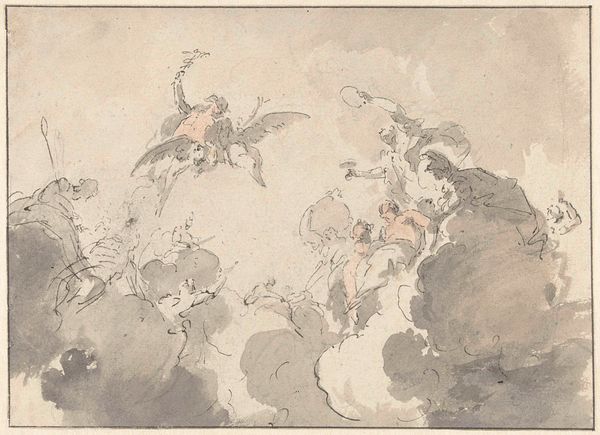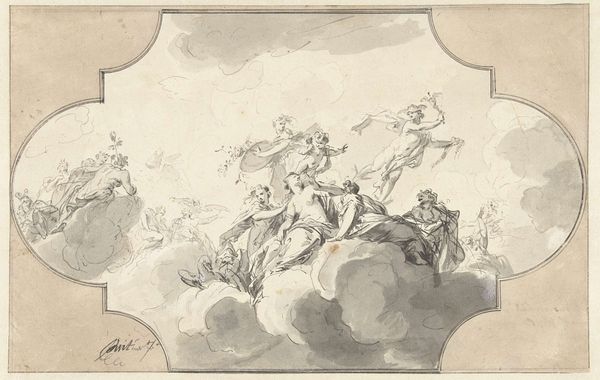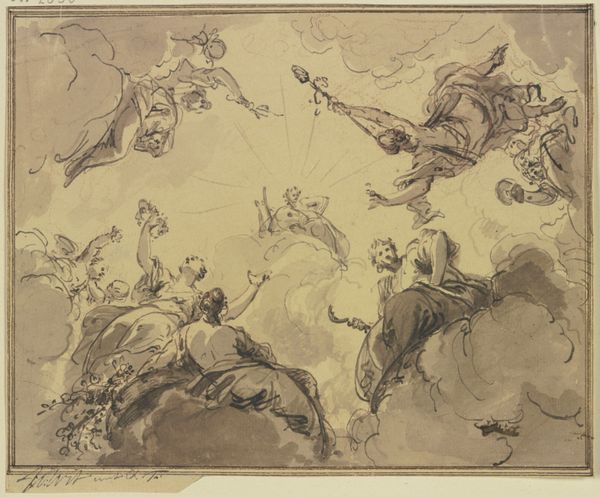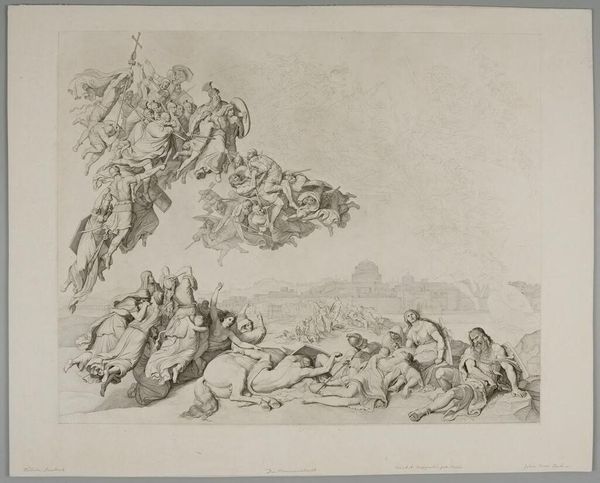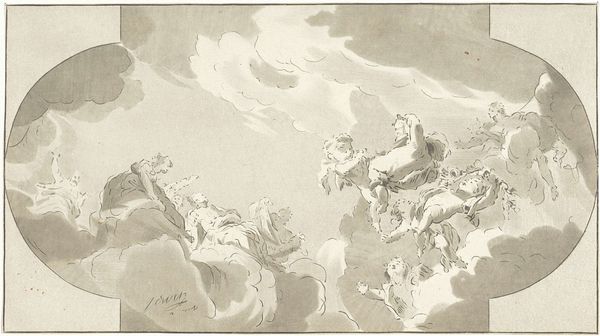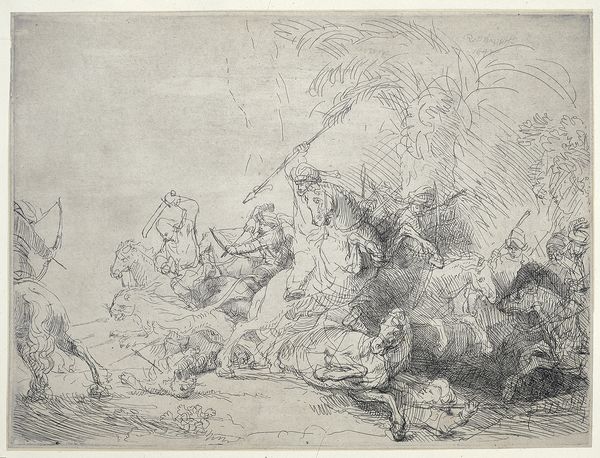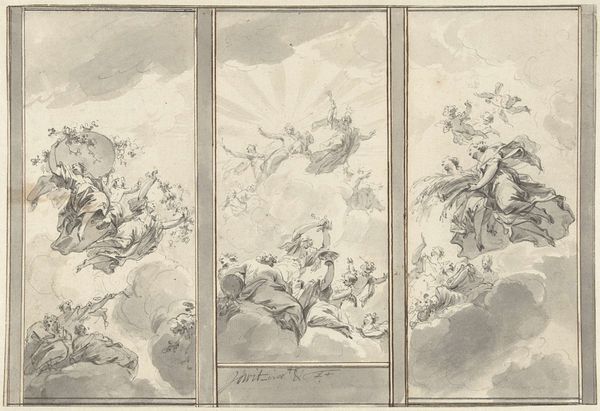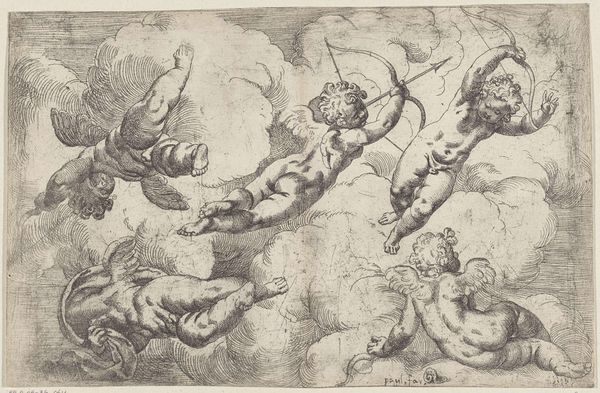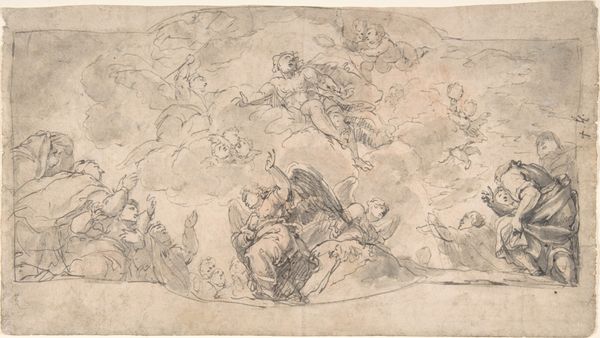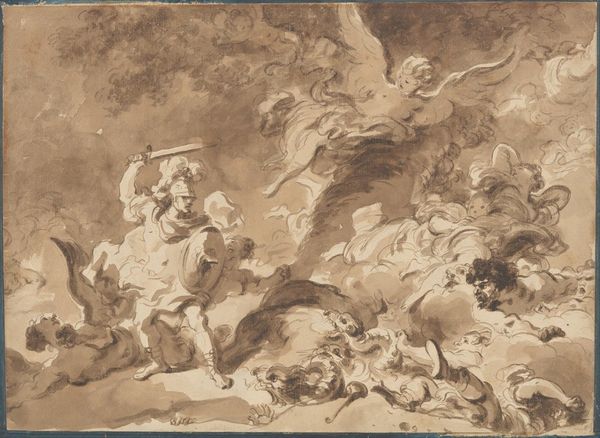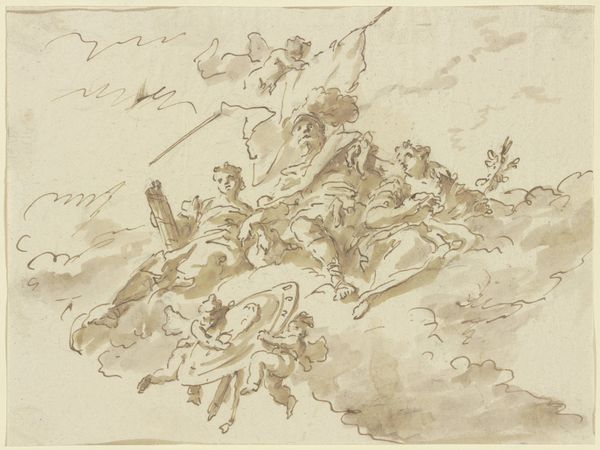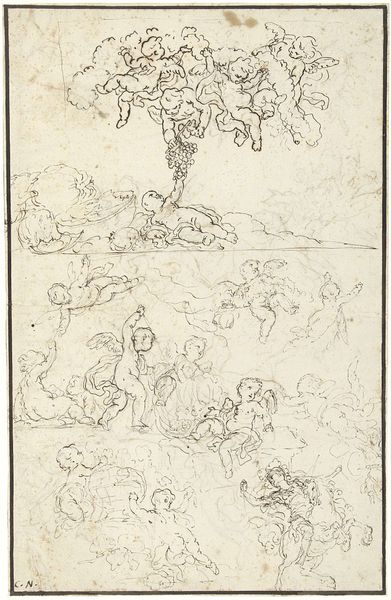
drawing, ink, pen
#
drawing
#
allegory
#
baroque
#
pencil sketch
#
figuration
#
ink
#
pen-ink sketch
#
pen
#
history-painting
#
rococo
Dimensions: height 162 mm, width 289 mm
Copyright: Rijks Museum: Open Domain
This is Jacob de Wit’s ceiling painting design, made with pen and gray ink in the 18th century. De Wit, a Dutch artist, was celebrated for his illusionistic ceiling paintings, known as “witjes.” During this period, the Dutch Republic was a major center of trade and art, dominated by wealthy merchant families who commissioned art that reflected their status and aspirations. De Wit's paintings often incorporated classical figures and mythological scenes, echoing the cultural values of the elite. Note how the cherubic figures float effortlessly against a cloudy sky. These figures, rendered in delicate grays, embody a vision of innocence and beauty, yet they also reflect the era’s complex relationship with childhood and religion. The cherubs are both playful and idealized, symbolizing purity while also reinforcing social ideals. De Wit uses classical imagery to celebrate worldly achievement.
Comments
No comments
Be the first to comment and join the conversation on the ultimate creative platform.
